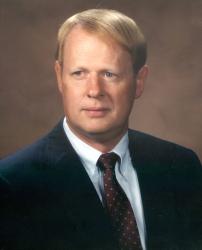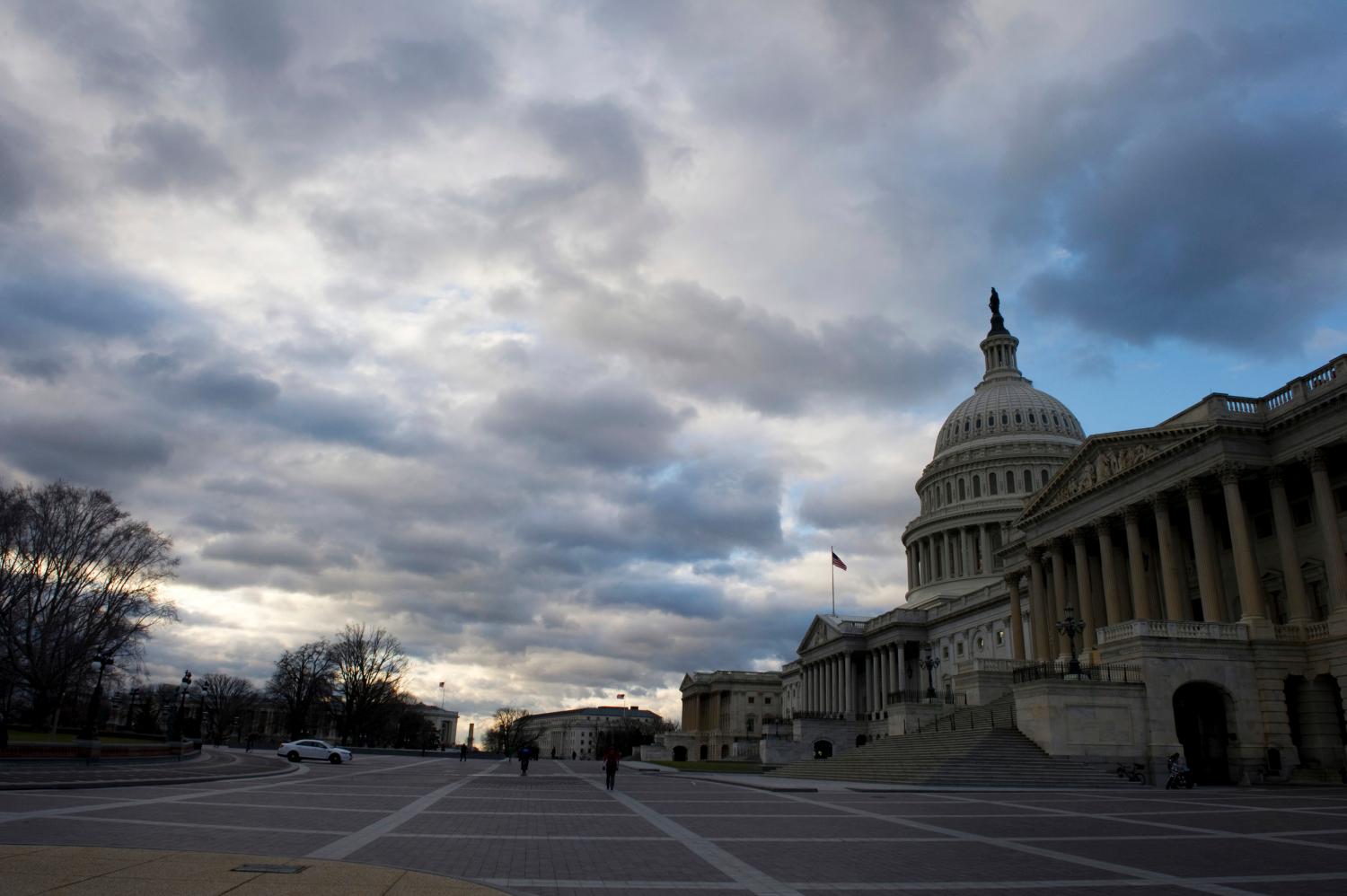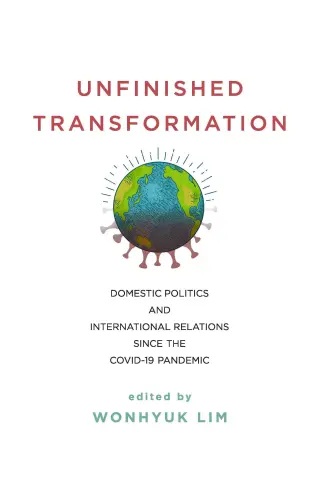Policy Brief #173
America needs to transform its energy system, and the Great Lakes region (including Minnesota, Wisconsin, Iowa, Missouri, Illinois, Indiana, Ohio, Michigan, Kentucky, West Virginia, western Pennsylvania and western New York) possesses many of the needed innovation assets. For that reason, the federal government should leverage this troubled region’s research and engineering strengths by launching a region-wide network of collaborative, high intensity energy research and innovation centers.
Currently, U.S. energy innovation efforts remain insufficient to ensure the development and deployment of clean energy technologies and processes. Such deployment is impeded by multiple market problems that lead private firms to under-invest and to focus on short-term, low-risk research and product development. Federal energy efforts—let alone state and local ones—remain too small and too poorly organized to deliver the needed breakthroughs. A new approach is essential.
| RECOMMENDATIONS |
||
| |
The federal government should systematically accelerate national clean energy innovation by launching a series of “themed” research and commercialization centers strategically situated to draw on the Midwest’s rich complex of strong public universities, national and corporate research laboratories, and top-flight science and engineering talent. Organized around existing capacities in a hub-spoke structure that links fundamental science with innovation and commercialization, these research centers would engage universities, industries and labs to work on specific issues that would enable rapid deployment of new technologies to the marketplace. Along the way, they might well begin to transform a struggling region’s ailing economy. Roughly six compelling innovation centers could reasonably be organized in the Great Lakes states with total annual funding between $1 billion and $2 billion. To achieve this broad goal, the federal government should:
|
|
America needs to transform its energy system in order to create a more competitive “next economy” that is at once export-oriented, lower-carbon and innovation-driven. Meanwhile, the Great Lakes region possesses what may be the nation’s richest complex of innovation strengths—research universities, national and corporate research labs, and top-flight science and engineering talent. Given those realities, a partnership should be forged between the nation’s needs and a struggling region’s assets.
To that end, we propose that the federal government launch a distributed network of federally funded, commercialization-oriented, sustainable energy research and innovation centers, to be located in the Great Lakes region. These regional centers would combine aspects of the “discovery innovation institutes” proposed by the National Academy of Engineering and the Metropolitan Policy Program (as articulated in “Energy Discovery-Innovation Institutes: A Step toward America’s Energy Sustainability”); the “energy innovation hubs” created by the Department of Energy (DOE); and the agricultural experiment station/cooperative extension model of the land-grant universities.
In the spirit of the earlier land-grant paradigm, this network would involve the region’s research universities and national labs and engage strong participation by industry, entrepreneurs and investors, as well as by state and local governments. In response to local needs and capacities, each center could have a different theme, though all would conduct the kinds of focused translational research necessary to move fundamental scientific discoveries toward commercialization and deployment.
The impact could be transformational. If built out, university-industry-government partnerships would emerge at an unprecedented scale. At a minimum, populating auto country with an array of breakthrough-seeking, high-intensity research centers would stage a useful experiment in linking national leadership and local capacities to lead the region—and the nation—toward a more prosperous future.
The Great Lakes Energy System: Predicaments and Possibilities
The Great Lakes region lies at the center of the nation’s industrial and energy system trials and possibilities. No region has suffered more from the struggles of America’s manufacturing sector and faltering auto and steel industries, as indicated in a new Metropolitan Policy Program report entitled “The Next Economy: Rebuilding Auto Communities and Older Industrial Metros in the Great Lakes Region.”
The region also lies at ground zero of the nation’s need to “green” U.S. industry to boost national economic competitiveness, tackle climate change and improve energy security. Heavily invested in manufacturing metals, chemicals, glass and automobiles, as well as in petroleum refining, the Great Lakes states account for nearly one-third of all U.S. industrial carbon emissions.
And yet, the Great Lakes region possesses significant assets and capacities that hold promise for regional renewal as the “next economy” comes into view. The Midwest’s manufacturing communities retain the strong educational and medical institutions, advanced manufacturing prowess, skills base and other assets essential to helping the nation move toward and successfully compete in the 21st century’s export-oriented, lower-carbon, innovation-fueled economy.
Most notably, the region has an impressive array of innovation-related strengths in the one field essential to our nation’s future—energy. These include:
- Recognized leadership in R&D. The Great Lakes region accounts for 33 percent of all academic and 30 percent of all industry R&D performed in the United States.
- Strength and specialization in energy, science and engineering. In FY 2006, the Department of Energy sent 26 percent of its federal R&D obligations to the Great Lakes states and is the second largest federal funder of industrial R&D in the region. Also in 2006, the National Science Foundation sent 30 percent of its R&D obligations there.
- Existing clean energy research investments and assets. The University of Illinois is a key research partner in the BP-funded, $500 million Energy Biosciences Institute, which aims to prototype new plants as alternative fuel sources. Toledo already boasts a growing solar industry cluster; Dow Corning’s Michigan facilities produce leading silicon and silicone-based technology innovations; and the Solar Energy Laboratory at the University of Wisconsin-Madison, the oldest of its kind in the world, has significant proficiency in developing practical uses for solar energy. Finally, the region is home to the largest U.S. nuclear utility (Exelon), the nation’s largest concentration of nuclear plants and some of the country’s leading university programs in nuclear engineering.
- Industry potential relevant to clean energy. Given their existing technological specializations, Midwestern industries have the potential to excel in the research and manufacture of sophisticated components required for clean energy, such as those used in advanced nuclear technologies, precision wind turbines and complex photovoltaics.
- Breadth in energy innovation endeavors and resources. In addition to universities and industry, the region’s research laboratories specialize in areas of great relevance to our national energy challenges, including the work on energy storage systems and fuel and engine efficiency taking place at Argonne National Laboratory, research in high-energy physics at the Fermi National Accelerator Laboratory, and the work on bioenergy feedstocks, processing technologies and fuels occurring at the DOE-funded Great Lakes BioEnergy Research Center (GLBRC).
- Regional culture of collaboration. Finally, the universities of the Great Lakes area have a strong history of collaboration both among themselves and with industry, given their origins in the federal land-grant compact of market and social engagement. GLBRC—one of the nation’s three competitively awarded DOE Bioenergy Centers—epitomizes the region’s ability to align academia, industry and government around a single mission. Another example is the NSF-supported Blue Waters Project. This partnership between IBM and the universities and research institutions in the Great Lakes Consortium for Petascale Computation is building the world’s fastest computer for scientific work—a critical tool for advancing smart energy grids and transportation systems.
In short, the Great Lakes states and metropolitan areas—economically troubled and carbon-reliant as they are—have capabilities that could contribute to their own transformation and that of the nation, if the right policies and investments were in place.
Remaking America’s Energy System within a Federal Policy Framework
America as a whole, meanwhile, needs to overcome the massive sustainability and security challenges that plague the nation’s energy production and delivery system. Transformational innovation and commercialization will be required to address these challenges and accelerate the process of reducing the economy’s carbon intensity.
Despite the urgency of these challenges, however, a welter of market problems currently impedes decarbonization and limits innovation. First, energy prices have generally remained too low to provide incentives for companies to commit to clean and efficient energy technologies and processes over the long haul. Second, many of the benefits of longrange innovative activity accrue to parties other than those who make investments. As a result, individual firms tend to under-invest and to focus on short-term, low-risk research and product development. Third, uncertainty and lack of information about relevant market and policy conditions and the potential benefits of new energy technologies and processes may be further delaying innovation. Fourth, the innovation benefits that derive from geographically clustering related industries (which for many years worked so well for the auto industry) have yet to be fully realized for next-generation energy enterprises. Instead, these innovations often are isolated in secure laboratories. Finally, state and local governments—burdened with budgetary pressures—are not likely to fill gaps in energy innovation investment any time soon.
As a result, the research intensity—and so the innovation intensity—of the energy sector remains woefully insufficient, as pointed out in the earlier Metropolitan Policy Program paper on discovery innovation institutes. Currently, the sector devotes no more than 0.3 percent of its revenues to R&D. Such a figure lags far behind the 2.0 percent of sales committed to federal and large industrial R&D found in the health care sector, the 2.4 percent in agriculture, and the 10 percent in the information technology and pharmaceutical industries.
As to the national government’s efforts to respond to the nation’s energy research shortfalls, these remain equally inadequate. Three major problems loom:
The scale of federal energy research funding is insufficient. To begin with, the current federal appropriation of around $3 billion a year for nondefense energy-related R&D is simply too small. Such a figure remains well below the $8 billion (in real 2008 dollars) recorded in 1980, and represents less than a quarter of the 1980 level when measured as a share of GDP. If the federal government were to fund next-generation energy at the pace it supports advances in health care, national defense, or space exploration, the level of investment would be in the neighborhood of $20 billion to $30 billion a year.
Nor do the nation’s recent efforts to catalyze energy innovation appear sufficient. To be sure, the American Recovery and Reinvestment Act (ARRA) provided nearly $13 billion for DOE investments in advanced technology research and innovation. To date, Great Lakes states are slated to receive some 42 percent of all ARRA awards from the fossil energy R&D program and 39 percent from the Office of Science (a basic research agency widely regarded as critical for the nation’s energy future). However, ARRA was a one-time injection of monies that cannot sustain adequate federal energy R&D.
Relatedly, the Great Lakes region has done well in tapping two other relatively recent DOE programs: the Advanced Research Projects Agency–Energy (ARPA-E) and Energy Frontier Research Centers (EFRCs). Currently, Great Lakes states account for 44 and 50 percent of ARPA-E and EFRC funding. Yet, with ARPA-E focused solely on individual signature projects and EFRC on basic research, neither initiative has the scope to fully engage all of the region’s innovation assets.
The character and format of federal energy R&D remain inadequate. Notwithstanding the question of scale, the character of U.S. energy innovation also remains inadequate. In this respect, the DOE national laboratories—which anchor the nation’s present energy research efforts—are poorly utilized resources. Many of these laboratories’ activities are fragmented and isolated from the private sector and its market, legal and social realities. This prevents them from successfully developing and deploying cost-competitive, multidisciplinary new energy technologies that can be easily adopted on a large scale.
For example, DOE activities continue to focus on discrete fuel sources (such as coal, oil, gas or nuclear), rather than on fully integrated end use approaches needed to realize affordable, reliable, sustainable energy. Siloed approaches simply do not work well when it comes to tackling the complexity of the nation’s real-world energy challenges. A perfect example of a complicated energy problem requiring an integrated end-use approach is transportation. Moving the nation’s transportation industry toward a clean energy infrastructure will require a multi-pronged, full systems approach. It will depend not only upon R&D in such technologies as alternative propulsion (biofuels, hydrogen, electrification) and vehicle design (power trains, robust materials, advanced computer controls) but also on far broader technology development, including that related to primary energy sources, electricity generation and transmission, and energy-efficient applications that ultimately will determine the economic viability of this important industry.
Federal programming fails to fully realize regional potential. Related to the structural problems of U.S. energy innovation efforts, finally, is a failure to fully tap or leverage critical preexisting assets within regions that could accelerate technology development and deployment. In the Great Lakes, for example, current federal policy does little to tie together the billions of dollars in science and engineering R&D conducted or available annually. This wealth is produced by the region’s academic institutions, all of the available private- and public-sector clean energy activities and financing, abundant natural resources in wind and biomass, and robust, pre-existing industrial platforms for research, next-generation manufacturing, and technology adoption and deployment. In this region and elsewhere, federal policy has yet to effectively connect researchers at different organizations, break down stovepipes between research and industry, bridge the commercialization “valley of death,” or establish mechanisms to bring federally-sponsored R&D to the marketplace quickly and smoothly.
A New Approach to Regional, Federally Supported Energy Research and Innovation
And so the federal government should systematically accelerate clean energy innovation by launching a series of regionally based Great Lakes research centers. Originally introduced in the Metropolitan Policy Program policy proposal for energy discovery-innovation institutes (or e-DIIs), a nationwide network of regional centers would link universities, research laboratories and industry to conduct translational R&D that at once addresses national energy sustainability priorities, while stimulating regional economies.
In the Great Lakes, specifically, a federal effort to “flood the zone” with a series of roughly six of these high-powered, market-focused energy centers would create a critical mass of innovation through their number, size, variety, linkages and orientation to pre-existing research institutions and industry clusters.
As envisioned here, the Great Lakes network of energy research centers would organize individual centers around themes largely determined by the private market. Based on local industry research priorities, university capabilities and the market and commercialization dynamics of various technologies, each Great Lakes research and innovation center would focus on a different problem, such as renewable energy technologies, biofuels, transportation energy, carbon-free electrical power generation, and distribution and energy efficiency. This network would accomplish several goals at once:
- Foster multidisciplinary and collaborative research partnerships. The regional centers or institutes would align the nonlinear flow of knowledge and activity across science and non-science disciplines and among companies, entrepreneurs, commercialization specialists and investors, as well as government agencies (federal, state and local) and research universities. For example, a southeastern Michigan collaboration involving the University of Michigan, Michigan State University, the University of Wisconsin and Ford, General Motors, and Dow Chemical could address the development of sustainable transportation technologies. A Chicago partnership involving Northwestern and Purdue Universities, the University of Chicago, the University of Illinois, Argonne National Lab, Exelon and Boeing could focus on sustainable electricity generation and distribution. A Columbus group including Ohio State University and Battelle Memorial Institute could address technologies for energy efficiency. Regional industry representatives would be involved from the earliest stages to define needed research, so that technology advances are relevant and any ensuing commercialization process is as successful as possible.
- Serve as a distributed “hub-spoke” network linking together campus-based, industry-based and federal laboratory-based scientists and engineers. The central “hubs” would interact with other R&D programs, centers and facilities (the “spokes”) through exchanges of participants, meetings and workshops, and advanced information and communications technology. The goals would be to limit unnecessary duplication of effort and cumbersome management bureaucracy and to enhance the coordinated pursuit of larger national goals.
- Develop and rapidly deploy highly innovative technologies to the market. Rather than aim for revenue maximization through technology transfer, the regional energy centers would be structured to maximize the volume, speed and positive societal impact of commercialization. As much as possible, the centers would work out in advance patenting and licensing rights and other intellectual property issues.Stimulate regional economic development. Like academic medical centers and agricultural experiment stations—both of which combine research, education and professional practice—these energy centers could facilitate cross-sector knowledge spillovers and innovation exchange and propel technology transfer to support clusters of start-up firms, private research organizations, suppliers, and other complementary groups and businesses—the true regional seedbeds of greater economic productivity, competitiveness and job creation.
- Build the knowledge base necessary to address the nation’s energy challenges. The regional centers would collaborate with K-12 schools, community colleges, regional universities, and workplace training initiatives to educate future scientists, engineers, innovators, and entrepreneurs and to motivate the region’s graduating students to contribute to the region’s emerging green economy.
- Complement efforts at universities and across the DOE innovation infrastructure, but be organizationally and managerially separate from either group. The regional energy centers would focus rather heavily on commercialization and deployment, adopting a collaborative translational research paradigm. Within DOE, the centers would occupy a special niche for bottom-up translational research in a suite of new, largely top-down innovation-oriented programs that aim to advance fundamental science (EFRCs), bring energy R&D to scale (Energy Innovation Hubs) and find ways to break the cost barriers of new technology (ARPA-E).
To establish and build out the institute network across the Great Lakes region, the new regional energy initiative would:
- Utilize a tiered organization and management structure. Each regional center would have a strong external advisory board representing the participating partners. In some cases, partners might play direct management roles with executive authority.
- Adopt a competitive award process with specific selection criteria. Centers would receive support through a competitive award process, with proposals evaluated by an interagency panel of peer reviewers.
- Receive as much federal funding as major DOE labs outside the Great Lakes region. Given the massive responsibilities of the proposed Great Lakes energy research centers, total federal funding for the whole network should be comparable to that of comprehensive DOE labs, such as Los Alamos, Oak Ridge and others, which have FY2010 budgets between $1 and $2 billion. Based on existing industry-university concentrations, one can envision as many as six compelling research centers in the Great Lakes region.
Conclusion
In sum, America’s national energy infrastructure—based primarily upon fossil fuels—must be updated and replaced with new technologies. At the same time, no region in the nation is better equipped to deliver the necessary innovations than is the Great Lakes area. And so this strong need and this existing capacity should be joined through an aggressive initiative to build a network of regional energy research and innovation centers. Through this intervention, the federal government could catalyze a dynamic new partnership of Midwestern businesses, research universities, federal laboratories, entrepreneurs and state and local governments to transform the nation’s carbon dependent economy, while renewing a flagging regional economy.
The Brookings Institution is committed to quality, independence, and impact.
We are supported by a diverse array of funders. In line with our values and policies, each Brookings publication represents the sole views of its author(s).










